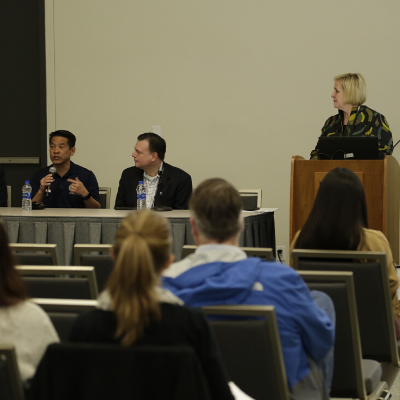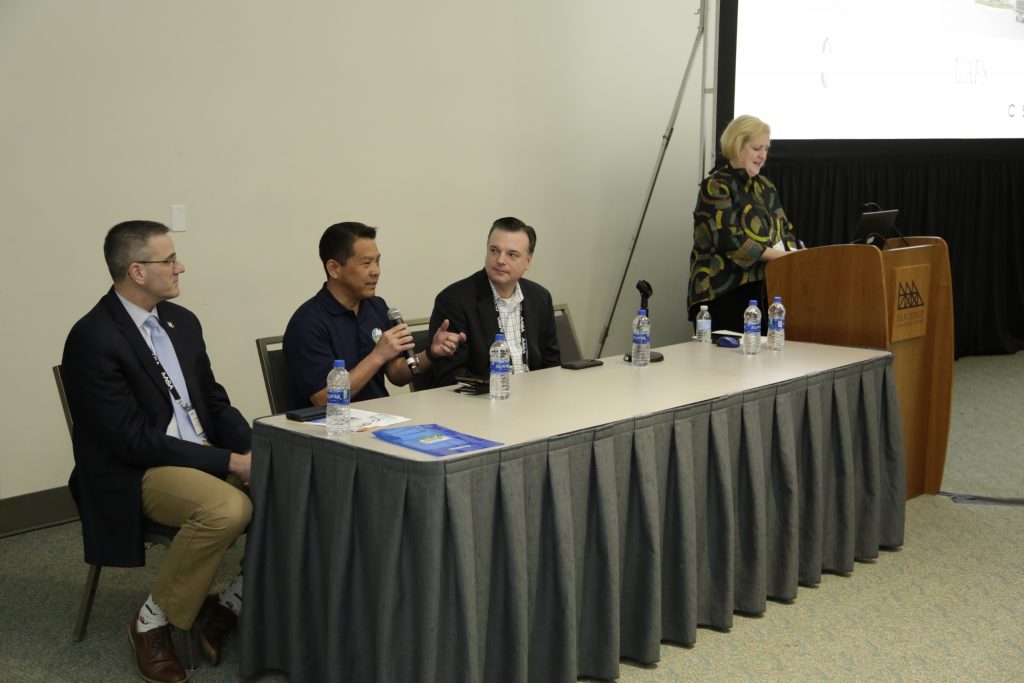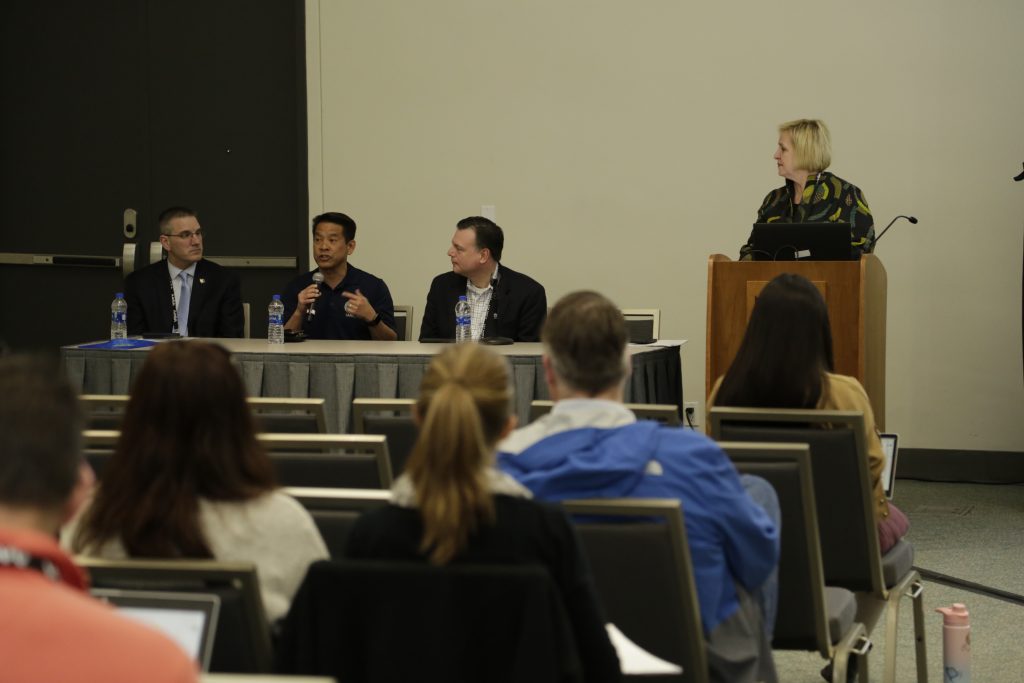There are four well-known industrial revolutions: the mechanization revolution in Great Britain, focusing on machinery and steam power; the mass production revolution started by assembly lines with Ford and Carnegie; the computer automation revolution of the last few decades, and the current shift to cyber and physical systems with new technology such as 5G.
This new shift in technology means the workforce is changing, but many schools fail to align their educational efforts to graduate students who can fill those high-tech jobs.
On Saturday morning, a panel of superintendents at AASA’s 2020 National Conference on Education shared how they are reshaping their schools to fill the void.
Schools often focus on academic grades and standardized testing scores, but they may overlook teaching students the skills to succeed in today’s workplace. As a consequence, some students never find their true passions, or miss those skill-building opportunities and end up taking low-wage jobs.
Currently, many schools are pushing programs such as code.org to prepare their students for industries all shifting towards technology. However, David Miyashiro, superintendent of Cajon Valley Union School District in El Cajon, Calif., said that companies and industries have asked schools to refrain from placing such emphasis on coding and computer science.
“Every government leader said that we’re stigmatizing the most important work in the country,” said Miyashiro.
Education has strong inertia, said Nick Polyak, superintendent of Leyden High School District 212 in Franklin Park, Ill., so it only changes when there is a big disruption.
He and the other panelists take up the mantle of the necessary “disruptors” to help change the education system. In their districts, they have begun practices such as taking field trips to businesses in different industries, mandating internships, partnering with companies and providing credential programs. They use tools like YouScience and VitaNavis to help students find their passions and measure their strengths, allowing them to focus on jobs they would excel at and enjoy.
When asked about how core classes such as math, English, and science fit into the new career-based approach, Doug Brubaker, superintendent of Fort Smith Public Schools in Arkansas stated that Career and Technical Education programs make those core competencies even more relevant to the workplace.
Steering schools to become more career-focused is hard, the superintendents said. It requires finding effective teachers who will guide the students. In the end, such a revolution in education could bring greater stability and opportunities to all students, regardless of economic class, as well as create a happy, healthy and self-advocating future workforce.
(Amanda Zhang is a junior at Canyon Crest Academy in San Diego and an intern with the AASA’s Conference Daily Online.)



